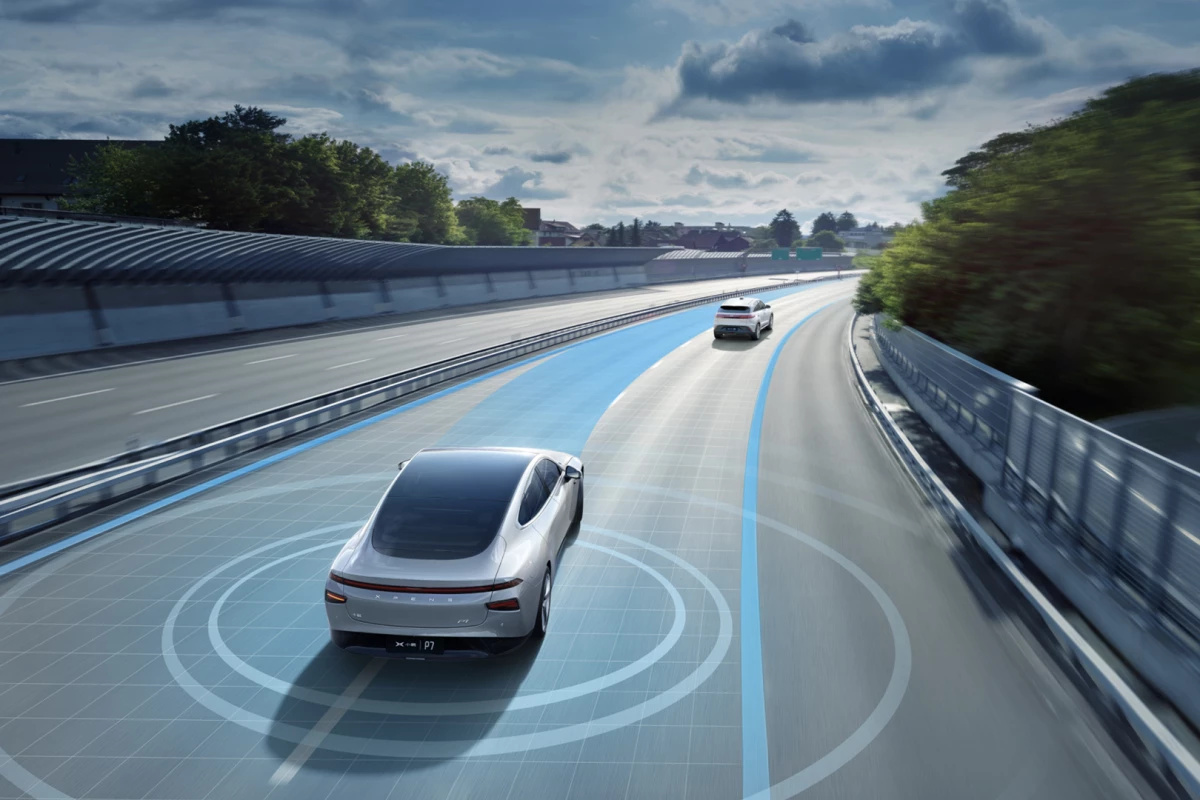China's closest Tesla Model 3 competitor, the XPeng P7, launched in April last year, loaded to the gills with enough self-driving sensors and computers to achieve full autonomy once the software is ready. Today, an OTA update gives the P7 more than 40 new capabilities.
The P7 puts together a pretty solid case for itself with a nice smooth look, decent performance and impressive battery ranges at an eyebrow-raising price point that starts at US$32,000. Pay a little more at around US$40,000, and you'll get the Premium version capable of running XPeng's XPILOT 3.0 software, through Nvidia Drive AGX Xavier self computers.
On launch, it was capable of adaptive cruise, lane-keeping even through tight curves, self-parking, navigation-guided highway autopilot and traffic light recognition.
As of today, the cars get smarter with a new "Navigation Guided Pilot" (NGP) system, now in "public beta" state. It gives them automatic lane changes and overtaking with collision avoidance, letting them make their own decisions on which lanes are the best to be in. They can now recognize speed limits and adjust accordingly, enter and exit highway ramps, and switch between highways. They'll start recognizing roadworks, construction, traffic cones, trucks and stationary vehicles. This is all still highway stuff; urban autopilot is slated for somewhere around 2022 with the release of XPILOT 4.0.

Like a Tesla, the P7 can display what it's seeing around you on the dash display when it's self-driving, to give you some peace of mind that it's not missing anything. In this case, however, it's not a blank computer simulation – the XPeng "surrounding reality" display shows a top-down 360-degree surround view from the cameras, with vehicles, speed limits, safety warnings and other information overlaid on it.
While you're doing your own driving, the P7 now gets a bunch of new driver assist warnings for forward and rear collisions, lane departures, cross traffic as you reverse and door opening warnings in case you're about to whack a cyclist. Traffic signs will pop up on the screen, and the car gains a full auto-emergency braking system. There are a lot of other improvements, too, including a faster-responding AI voice control assistant and more accurate self-parking.
This is, of course, still some years behind what Tesla's cars are currently doing, and as quickly as XPeng seems to be getting up to speed (the company was only founded in 2014), it's hard to see anyone in the industry catching up with Tesla for many years yet. Tesla's key advantage here is numerical; as of Q1 2020 there were more than 825,000 cars on the road running Tesla's Autopilot hardware. By now they're approaching five billion miles of self-driving, phoning home constantly so the entire fleet can learn from every mistake and every weird edge case.

The P7 is a promising machine, for sure, but XPeng is going to have to move a ton more units to get some data through its own system. Up to January this year, it had sold 15,062 units in six months – impressive for such a young company, but about what Tesla sold every 11 days in 2020. Now, if there's one thing China can bring to any equation, it's massive numbers, and it'll sure be interesting to watch how this Guangzhou-based company grows. It's already delivering cars in China and Norway, and plans to bring the P7 to the USA are underway.
Source: Xpeng





